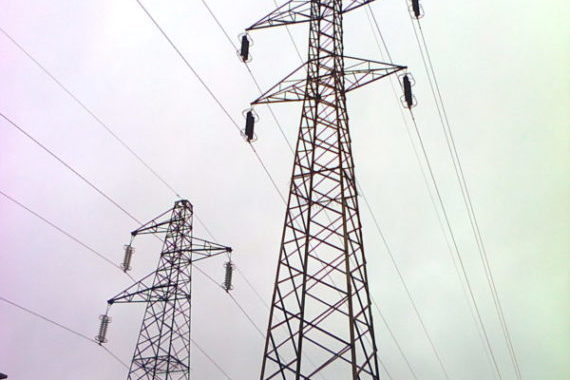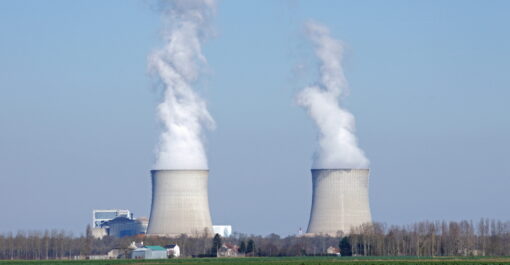Roma, 26 agosto 2024 – Secondo i dati di Terna, la società che gestisce la rete di trasmissione nazionale, nel mese di luglio il fabbisogno di energia elettrica in Italia è stato pari a 31,3 miliardi di kWh, in crescita del 4,5% rispetto a luglio 2023. Si tratta del dato mensile di luglio più alto in termini di consumi dal 2015.
VARIAZIONE POSITIVA
La variazione positiva, che recupera pienamente il dato negativo di luglio dello scorso anno (-3,4%), è stata raggiunta con due giorni lavorativi in più (23 vs 21) e una temperatura media mensile sostanzialmente in linea rispetto a luglio 2023, ad eccezione dell’ultima settimana del mese, durante la quale la temperatura media ha superato di 3 C° quella dello stesso periodo dello scorso anno. Le elevate temperature raggiunte non hanno comunque intaccato i margini di adeguatezza, che rimangono positivi. Il picco massimo di domanda, pari a circa 57,9 GW, è stato registrato nella giornata del 19 luglio tra le 14 e le 15.
DATO DOMANDA DESTAGIONALIZZATA
Il dato della domanda elettrica, destagionalizzato e corretto dagli effetti di calendario e temperatura, porta la variazione a +2,6% rispetto a luglio 2023. A livello territoriale, la variazione tendenziale di luglio è risultata differenziata: positiva al Nord (+7,4%) e al Centro (+3,3%), pressoché stazionaria al Sud e nelle Isole (-0,3%). Nei primi sette mesi dell’anno, il fabbisogno nazionale è in crescita dell’1,7% rispetto al corrispondente periodo del 2023 (+0,9% il valore rettificato). L’indice IMCEI (Indice mensile dei consumi elettrici industriali) elaborato da Terna, che prende in esame i consumi industriali delle imprese cosiddette ‘energivore’, ha fatto registrare una crescita del 3,5% rispetto a luglio 2023.
VARIAZIONE IN TERMINI CONGIUNTURALI
Con dati destagionalizzati e corretti per l’effetto calendario, la variazione si porta a +3,1%. In particolare, positivi i comparti della cartaria, chimica, alimentare, meccanica, siderurgia e metalli non ferrosi. In flessione, ceramiche e vetrarie, mezzi di trasporto e cemento calce e gesso. In termini congiunturali, la variazione della richiesta elettrica destagionalizzata e corretta dagli effetti di calendario e temperatura è positiva (+3%). In diminuzione invece la variazione congiunturale dell’indice IMCEI (-1,3%). L’indice IMSER (Indice Mensile dei Servizi), che Terna pubblica sulla base dei dati dei consumi elettrici mensili forniti da alcuni gestori di rete di distribuzione (E-Distribuzione, Unareti, A-Reti, Edyna e Deval), ha fatto registrare, nel mese di maggio 2024, una variazione positiva del 4,2% rispetto a maggio 2023.
BILANCIO MENSILE
In particolare, tra i comparti che hanno registrato variazioni positive si trovano attività professionali, scientifiche e tecniche, amministrazione pubblica e Difesa, informazione e comunicazione. Tra quelli con variazione negativa trasporto e magazzinaggio e servizi veterinari. Tornando al bilancio mensile di Terna, lo scorso mese la domanda di energia elettrica italiana è stata soddisfatta per l’86,4% dalla produzione nazionale e per la quota restante (13,6%) dal saldo dell’energia scambiata con l’estero. Il valore del saldo estero mensile risulta pari a 4,3 TWh, l’1,5% in meno rispetto a luglio 2023. A livello progressivo, da gennaio a luglio 2024, l’import netto è in aumento del 3,1% rispetto ai primi sette mesi del 2023.
PRODUZIONE NAZIONALE NETTA
In dettaglio, la produzione nazionale netta è risultata pari a 27 miliardi di kWh. Le fonti rinnovabili hanno coperto il 44,2% della domanda elettrica (era 38,1% a luglio 2023). In aumento la fonte idrica (+38,7%), con valori record di idraulicità al Nord che si riducono spostandosi verso il Sud, facendo registrare minimi storici in Sicilia, fotovoltaica (+22,4%) e geotermica (+0,7%); l’incremento della produzione del fotovoltaico (+867 GWh) è dovuto al contributo positivo dell’aumento di capacità in esercizio (+877 GWh) che ha compensato il minor irraggiamento (-10 GWh). In diminuzione la fonte eolica (-11,6%) e termica (-6,5%). In particolare, la quota di produzione a carbone è in riduzione del 74,8% rispetto allo stesso mese del 2023.
CAPACITÀINNOVABILE IN ESERCIZIO
Nei primi sette mesi del 2024 la capacità rinnovabile in esercizio è aumentata di 4.282 MW (di cui 3.853 MW di fotovoltaico). Tale valore è superiore di 1.208 MW (+39%) rispetto allo stesso periodo dell’anno precedente. L’analisi dettagliata della domanda elettrica mensile provvisoria del 2023 e del 2024 è disponibile nella pubblicazione “Rapporto Mensile sul Sistema Elettrico”, consultabile alla voce “Sistema elettrico >> Dispacciamento >> Dati esercizio” del sito www.terna.it
I dati in tempo reale sull’esercizio del sistema elettrico nazionale sono inoltre consultabili sull’app di Terna disponibile sui principali store
https://play.google.com/store/apps/details?id=it.terna.energia&hl=it
https://apps.apple.com/it/app/terna/id1458535498
TERNA: ELECTRICITY CONSUMPTION UP 4.5% IN JULY
Monthly demand at 31.3 billion kWh. Around 4.3 GW of new installed renewable capacity between January and July. Thermoelectric production continues to fall: -6.5% compared to July 2023, -74.8% for coal-based production. Double-digit growth in hydroelectric power (+38.7%) and photovoltaic power (+22.4%) over July 2023
Rome, 26 August 2024 – According to data from Terna, the company that manages the Italian national electricity transmission grid led by Giuseppina Di Foggia, the demand for electrical energy in Italy came to 31.3 billion kWh in July: up 4.5% compared to July 2023, and the highest figure for July’s monthly consumption since 2015. This positive trend, which represents a full recovery from the negative figure seen in July last year (-3.4%), was achieved with two additional working days (23 vs 21) and an average monthly temperature largely in line with that of July 2023, with the exception of the last week of the month, during which the average temperature was 3°C higher than that for the same period last year.
However, the high temperatures did not impinge upon the adequacy margins, which remained positive. Peak of demand, equal to around 57.9 GW, was recorded on 19 July, between 2:00 p.m. and 3:00 p.m.
The figure for electricity demand, adjusted for seasonal, calendar and temperature effects, brings the variation to +2.6% compared to July 2023.
Trends in July differed across the regions, with an increase in the North (+7.4%) and Central Italy (+3.3%), while remaining almost unchanged in the South and Islands (-0.3%).
In the first seven months of the year, national demand increased by 1.7% compared to the corresponding period of 2023 (+0.9% adjusted value).
Terna’s IMCEI (Monthly Industrial Electricity Consumption Index), which looks at the industrial consumption of energy-intensive businesses, showed an increase of 3.5% compared to July 2023. With the data adjusted for seasonal and calendar effects, the variation comes to +3.1%. Looking at specific sectors, growth was seen in the paper, chemical, food, mechanical, iron and steel, and non-iron metal industries; while the ceramics and glass, transportation, and cement, lime and gypsum sectors all shrank.
The short-term variation in electricity demand, adjusted for seasonal, calendar and temperature effects, was positive (+3%). The IMCEI index, on the other hand, showed a short-term decrease (-1.3%).
The IMSER (Monthly Services Index), which Terna publishes on the basis of monthly electricity consumption figures from certain distribution grid operators (E-Distribuzione, UNARETI, A-Reti, Edyna and Deval), recorded an increase of 4.2% in May 2024 compared to May 2023. In greater detail, the industries that recorded growth include professional, scientific and technical activities, public administration and defence, information and communications. transport and storage and veterinary services, instead, showed a negative trend.
Returning to Terna’s monthly figures, last month saw 86.4% of Italian electricity demand met by national production, with the remainder (13.6%) satisfied by the balance of electricity exchanged with foreign countries. The monthly foreign balance was 4.3 TWh, 1.5% less than in July 2023. Progressively, net imports between January and July 2024 increased by 3.1% compared to the first seven months of 2023.
In detail, net domestic production amounted to 27 billion kWh. Renewable sources covered 44.2% of electricity demand (this figure was 38.1% in July 2023). There was an increase in hydroelectric power (+38.7%), with record values for water resources in the North, decreasing progressively further South to reach historic lows in Sicily; in photovoltaic power (+22.4%); and in geothermal power (+0.7%). The growth in photovoltaic production (+867 GWh) was due to the positive contribution made by the increase in operating capacity (+877 GWh), which offset decreased solar irradiation (-10 GWh). Wind power (-11.6%) and thermal power (-6.5%) decreased, with coal-based production in particular down by 74.8% compared to the same month in 2023.
During the first seven months of 2024, the operating capacity of renewables increased by 4,282 MW (including 3,853 MW from photovoltaic). This value is 1,208 MW (+39%) higher than the same period of the previous year.
A detailed analysis of provisional 2023 and 2024 monthly electricity demand is available in the “Monthly Report on the Electricity System”, available under the section “Electric System>>Publications>>Monthly Report” at www.terna.it
Real-time data on the operation of the national electricity system can also be found on the Terna app, available on all app stores:
https://play.google.com/store/apps/details?id=it.terna.energia&hl=it








